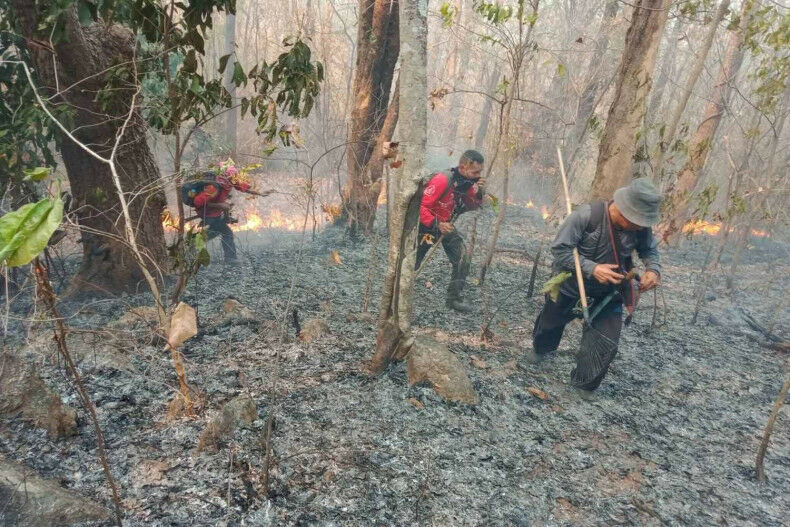Dust distress: Thailand choked by PM2.5 air pollution surge

Air pollution levels in parts of Thailand have surged into the red-coded category, indicating serious health risks. Particularly hard hit was Chiang Mai, where excessive PM2.5 dust levels were detected on today, April 4.
The Geo-Informatics and Space Technology Development Agency (GISTDA) revealed that 21 provinces were grappling with dangerous PM2.5 particulate levels – fine airborne particles measuring 2.5 micrometres in diameter or less. These ranged from 75.4 to 213.4 microgrammes per cubic metre of air over 24 hours, far exceeding the government’s safe threshold of 37.5µg/m³.
Chiang Mai bore the brunt of the dust surge, recording the highest level at 213.4µg/m³. This was followed by Mae Hong Son with 204.6µg/m³, Chiang Rai (203.3µg/m³), Nan (180.4µg/m³), and Lamphun (174.0µg/m³). PM2.5 levels in Phayao and Lampang were also markedly high at 173.9µg/m³ and 155.0µg/m³ respectively.
Other provinces experiencing red-coded PM2.5 levels included Phrae, Uttaradit, Nakhon Phanom, Tak, Loei, Sukhothai, Udon Thani, Sakon Nakhon, Nong Khai, Bueng Kan, Kalasin, Nong Bua Lam Phu, Mukdahan, and Phitsanulok.
An additional 20 provinces were flagged with orange warnings, denoting initially unsafe PM2.5 levels ranging from 37.9 to 74.7µg/m³. These provinces were Khon Kaen, Kamphaeng Phet, Maha Sarakham, Phetchabun, Amnat Charoen, Roi Et, Chaiyaphum, Yasothon, Udon Thani, Phichit, Kanchanaburi, Si Sa Ket, Surin, Buri Ram, Nakhon Ratchasima, Uthai Thani, Nakhon Sawan, Phetchaburi, Samut Songkhram, and Ratchaburi.
Meanwhile, provinces in the lower central plain, the lower northeast, the east, and the south maintained moderate and good air quality. Phuket, a popular southern tourist province, reported the best air quality, registering a low 13.1µg/m³, followed by Rayong at 15.8µg/m³.
It was reported that the severity and spread of the red-coded PM2.5 levels had worsened from conditions observed yesterday.
GISTDA provided a colour-coded map delineating the varying PM2.5 levels across different provinces as of today, April 4, reported Bangkok Post.
In related news, Northern Thailand is grappling with a persistent smog problem, typically attributed to crop waste burning, deforestation for mushroom harvesting and vehicle emissions, prompting calls for a global shift to plant-based diets. However, an emerging consensus among scientists and environmental activists suggests a deeper, global solution is required to avert a climate disaster.
Latest Thailand News
Follow The Thaiger on Google News:


























